National Science and Technology Development Agency | National Nanotechology Center
Research
Artificial intelligence (AI)
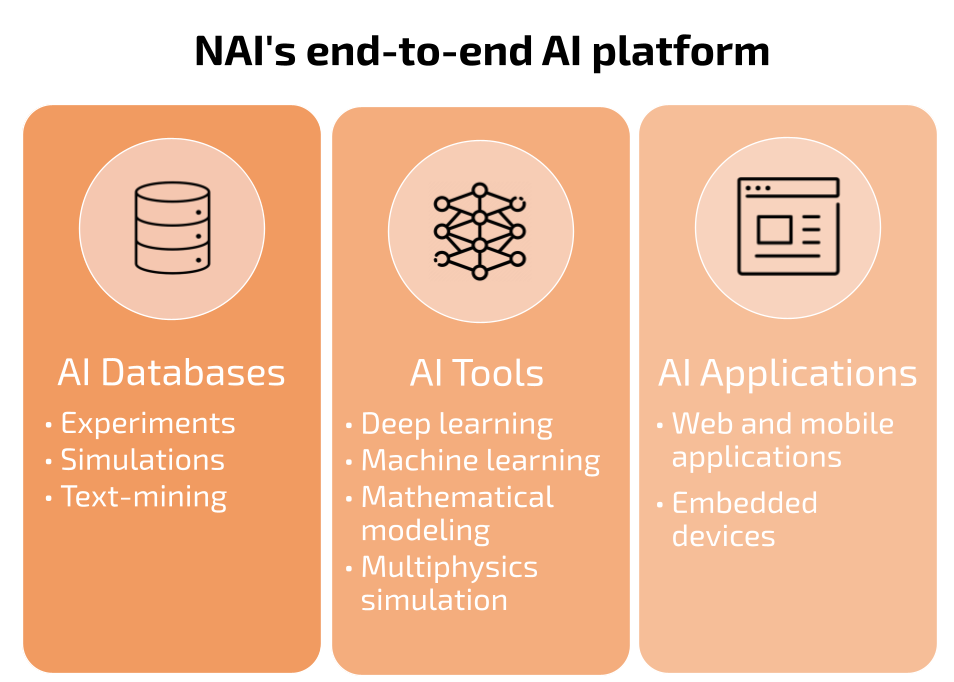
The Nanoinformatics and Artificial Intelligence (NAI) research team aims at developing and applying advanced data analysis techniques and artificial intelligence to accelerate end-to-end AI research and applications, especially in nanotechnology and also in healthcare, environmental, energy and agricultural sectors.
To achieve this goal, we have developed the NAI’s end-to-end AI platform. The platform is built on top of our expertises in artificial intelligence, statistical analysis and mathematical modeling. It consists of three main reusable components to accelerate end-to-end AI research and applications:
1) AI databases. This component uses approaches such as text-mining, knowledge extraction and information retrieval to gather information and organize it into a structured database.
2) AI tools. This component uses approaches such as mathematical modeling, machine learning and deep learning to learn from the information in AI databases to create AI models and tools.
3) AI applications. This component focuses on creating end-user applications, making AI models and tools accessible to users via web and mobile applications and embedded devices.
We offer AI service and consultation based on our end-to-end AI platform. We can provide an AI solution to your problem from data organization, to research and development of AI models, and to the creation of AI applications. If you have a problem and want to leverage our expertise in AI, please contact us using our contact form at https://peer-ai.com/contactus, and we will get back to you.
AI DATABASES
Data is the key to knowledge. The first component of our end-to-end AI platform is AI databases. One of the projects under this component is the AI-assisted nanoinformatics database called PeerAI DB.
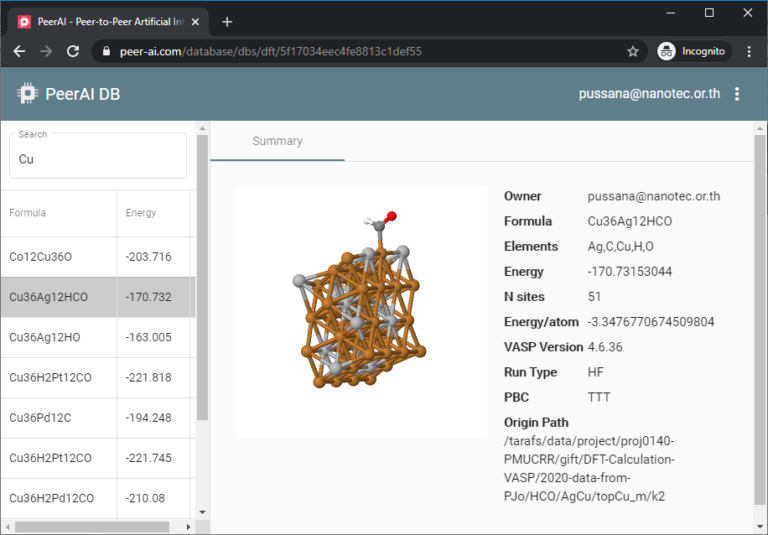
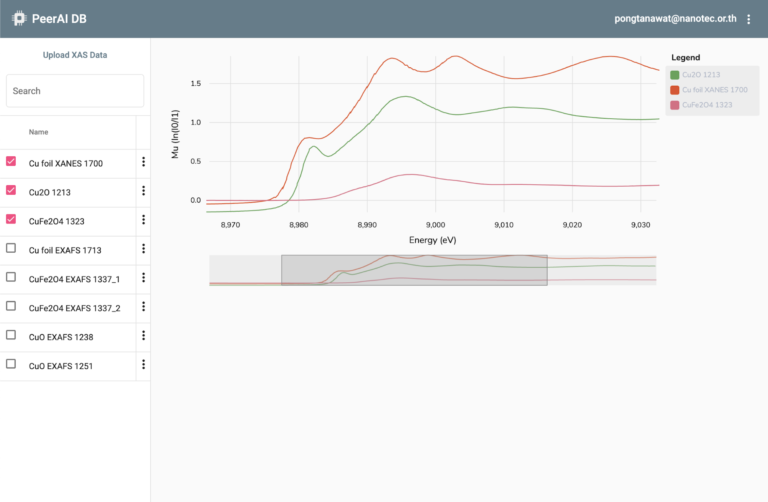
PeerAI DB
PeerAI DB is a database system of peer-contributed data for AI research and industrial applications.
Heading toward the sharing R&D ecosystem, PeerAI DB serves as an open database system for prospective AI-related research and industrial applications. To achieve the global standard, we design the data sharing system to be “FAIR” [1], which means that the open data contributed by peers would be Findable, Accessible, Incorporable, as well as, Reusable among peers. Since we highly value the importance of your data privacy and security, the controlled-access feature is provided to guarantee that private data can only be viewed by authorized users until the data is ready to be shared. We currently focus on nanomaterial databases to assist researchers to gather material information and accelerate advanced material discoveries.
[1] Wilkinson, M., Dumontier, M., Aalbersberg, I. et al. The FAIR Guiding Principles for scientific data management and stewardship. Sci Data 3, 160018 (2016). https://doi.org/10.1038/sdata.2016.18
AI TOOLS
To distill knowledge from data and make it useful, we need to create AI models and analytical tools from data. Once information is organized into databases that are easy for the machine to analyze (using our AI databases), the second component in our end-to-end platform is AI tools for analyzing the information in the database to form knowledge. These tools range from a simple machine learning technique such as linear regression to advanced artificial intelligence techniques such as deep learning. This component focuses on deep research and knowledge to create these AI tools. Below are a few research projects creating these AI tools.
AI in Healthcare
Deep learning has progressively gained in importance in healthcare due to its versatile ability to discover information hidden in complex data. We have been developing and utilizing deep learning to gain insights from such complex biomedical data in a wide range of applications such as radiography, neurology, and nanomedicine.
Accelerated medical imaging
Medical imaging has long been a pivotal part of successful medical diagnoses, especially in radiography. Different imaging modalities provide different but complementary insights. Having access to data from several imaging modalities, doctors would be able to make a clinical decision more easily and accurately. Nevertheless, collecting data from all of these imaging modalities takes a prohibitively long time. Our research team members and our collaborators have been developing methods based on deep learning and compressed sensing to accelerate the data collection process. We have shown that we were able to provide high-quality reconstructions from up to 8-fold accelerated data collection process of multishot echo planar imaging, a data collection type of magnetic resonance imaging (MRI), by developing a method that synergistically combines deep learning and compressed sensing.

Improved neurological diagnostic tools
Increasing life expectancy and declining fertility rate have caused the demographic shift towards an older population across the world. The extra years in life bring about challenges in terms of age-related decline in physical and mental functions. One of the most common dysfunctions is neurodegeneration. Together with our neurologist and neuroscientist collaborators, we are currently (1) developing a machine-learning-based diagnostic tool that enables early diagnosis and better assessment of neurodegenerative diseases, and (2) improving ways to characterize potential neurodegenerative disease subtypes, which could help open the door to more precise and personalized neurological treatments.

Drug Discovery and Nanomedicine
Our research project aims to uncover or repurpose the chemical compounds that could potentially be potent drugs when used individually or in combination by applying machine learning and mathematical models. First, machine learning models are used for virtual high-throughput screening to identify the lead compounds from databases based on the relationships between chemical structures and their biological activities. Then, mathematical modeling as well as molecular simulations are employed to understand the mechanisms and modify the lead compounds systematically to improve their activity and selectivity towards specific biological targets, while reducing toxicity and unwanted effects. This investigation can help accelerate the processes, reduce cost, and improve the success rate of drug discovery and nanomedicine design.
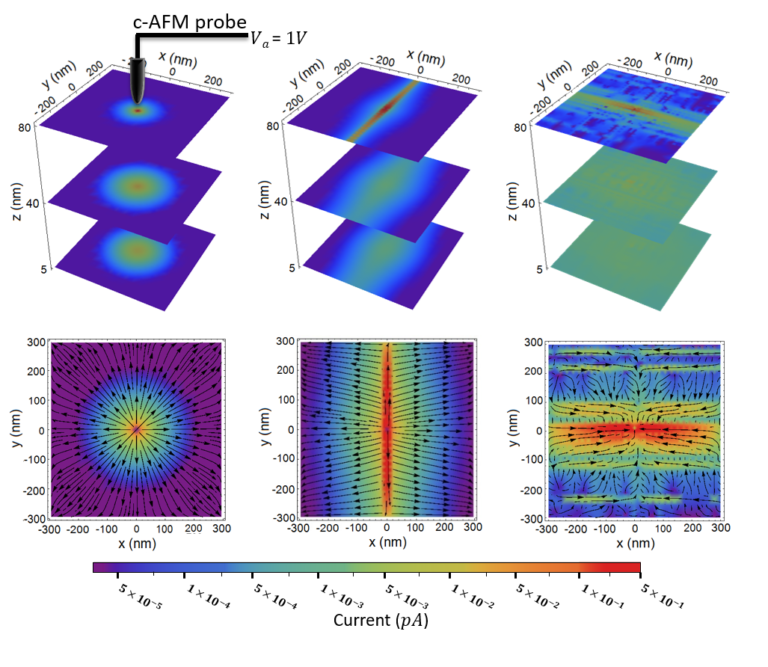
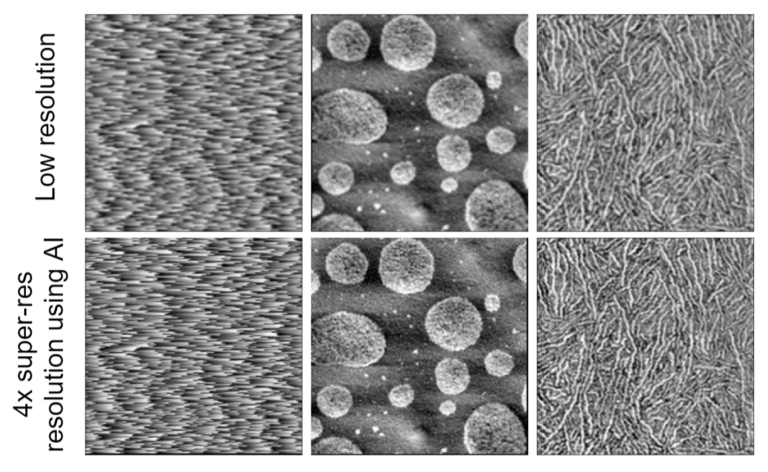
AI in Scanning Probe Microscopy (SPM)
Scanning probe microscopy (SPM) was first developed to visualize surface images with nanoscale resolution by moving a sharp probe tip back and forth around the surface area of interest. This characterization technique is very versatile, depending on the purpose of study. For example, Atomic Force Microscopy (AFM) is a type of SPM that measures the force between probe and sample surface, producing the topological images. By integrating the conducting tip and varying applied voltage, a.k.a, Conductive AFM (C-AFM) and Kelvin Probe AFM (KPFM), more insight in electrical properties of the material can also be obtained at the same nanoscale resolution. We have developed a fully three-dimensional device simulation tool enabling treatment of inhomogeneous systems including tip geometry and nanoscale morphology, to assist in-depth analyses of materials, including carrier mobility, traps and defects Producing the high resolution image often results in the damage of samples and scanning probes. This hindrance can be resolved with the AI super-resolution technique we are currently developing.
AI in Spatio-Spectral Hyperspectral Imaging
A hyperspectral imaging system can collect information from several bands of the electromagnetic spectrum, including those that are invisible to the naked eyes and most typical digital cameras. A hyperspectral camera provides the spectrum for each pixel in the region-of-interest, enabling users to characterize the behavior of each pixel based on its spectral signature (also called a spectral fingerprint). Because of its ability to provide not only the spatial information, but also the spectral information of an object being scanned, hyperspectral imaging has been extensively used especially in geosciences, chemistry and agricultures. Nevertheless, advanced data analysis tools need to be developed to use such complex, yet meaningful, spatio-spectral data obtained from hyperspectral imaging to its full potential.
In close collaboration with the nanoneedle research team at NANOTEC and the computer engineering department of Chulalongkorn university, we have developed a non-destructive rice variety inspection system based on the synergy between hyperspectral imaging and deep learning. In particular, we have proposed a deep learning based method that can simultaneously take advantage of both spatial information (morphology) and spectral information (chemical properties) obtained from a near-infrared hyperspectral imaging system (visit our github repository for more information).
AI APPLICATIONS
The third component of our end-to-end platform focuses on accessibility to our AI research. We call this component the AI application component. This component focuses on bringing AI models and tools resulting from our research to end-users via web and mobile applications.
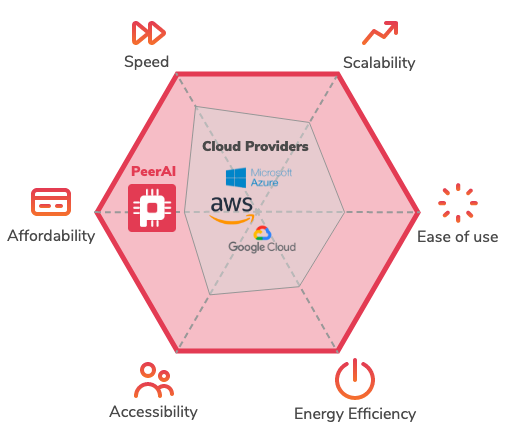
PeeAI Computing Platform
An example project in this component of the platform is PeerAI computing platform. PeerAI computing platform is a peer-to-peer artificial intelligence computing platform. PeerAI computing platform is a web and mobile application that allows people to lend and borrow nearby computing resources to run AI models, thus making AI accessible to all.
PeerAI computing platform is specifically designed to support increasing demand for AI computation and resources. Just like Bittorrent supported the Internet age by sharing files, PeerAI computing platform is a protocol to support the AI age by sharing AI data, model and computing resources.

AI-Assisted COVID-19 Pneumonia Detection from Chest X-Rays
In Thailand, chest X-ray is a crucial medical technique diagnosing lung diseases and as a means to simultaneously follow up COVID-19 diagnoses and treatments. PeerAI Chest X-ray framework is an AI web application to predict the chance of COVID-19 infection from chest x-ray images, developed to work offline in any devices to alleviate the common concern on patients’ privacy.


